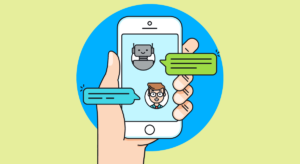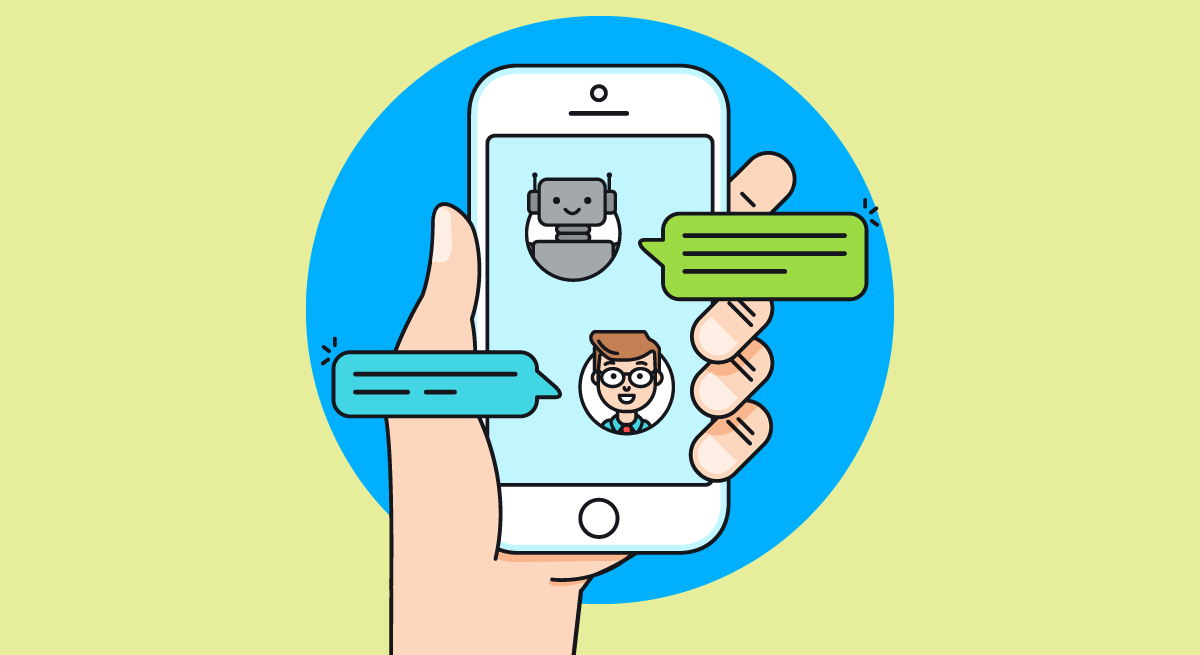Connected with 100 trillion synapses, the human brain is a complex network of 100 billion neurons. Then, why do we keep fascinating the idea of “Human vs robot”? Is this a message fed to our brains via movies like The Matrix and The Terminator? Or, is it something else?
Here is the theory behind the comparison between humans and bots.
Our engineers have been working on artificial intelligence since the 1950s. Since then, we measure the machinery intelligence on the scale of human intelligence. It all started with the Turing Test by Alan Turing, which was developed to exhibit a machine’s intellectual ability and behaviour, indistinguishable from, or equivalent to human intelligence.
The only point behind developing and testing AI at that time was to check whether a machine can match and engage in an activity that requires a human level or brain development.
Till date, the Turing test competitions are held every decade to challenge chatbot intelligence against human examiner. When they start, the judge or the examiner does not know whether there is a bot or a human on the other end of the texting app. If the machine is capable enough to dupe the judges into judging it is a human, it passes the Turing test.

Recently, One of the world’s top-ranked human in the “Go” game (an ancient Chinese game where you need to chooses moves to win out of 200 different options) was defeated by Google’s AlphaGo. According to another similar instance, in 2011, Watson (IBM’s question-answering machine) defeated two greatest Jeopardy champions.
In 1997, another smart machine by IBM, the Deep Blue, chess playing computer defeated world chess champion, after a six-game match. This increased capacity of robots is bound to make humans wonder, “How far will this go?” and “Are we going to be replaced by bots?”
How to learn to stop worrying about AI?
Humans have hundred trillion neutral pathways in their head. Therefore, as humans, we should remember that till date no computer has the power to come even close to matching a human brain. World’s fastest supercomputer, the Fujitsu-built K, has a power of calculating eight quadrillions per second.
However, it was only able to simulate one second of neural activity in 40 minutes. Which means the even after being the most cutting-edge technology, it is 2,400 times slower than an average human brain. The code bots are capable of writing 3,00,000 lines of code per minute. Whereas a human coder can do the same amount of work in a week or more. Do you ever wonder if computers are so slow, what makes chatbots so quick?
What describes a bot as a bot?
To completely understand a bots potential, first, we need to go through the strengths and weakness of a bot. We will have to understand other ways of relatively knowing what bots do, like communicating with humans.
However, before we step forward let’s understand, what is a bot? A bot is a coded computer program, which works according to the input. A chatbot is the kind of bot that resides inside a chat product, for instance, a messaging app. Recently adopted by Kik, Facebook and Telegram, these messenger bots seem to be the next big innovation regarding technology.
Bots are great at computation. They can check and store huge amount of data and calculated numbers. These bots are also capable of looking at millions of factual options and bring out the best in few seconds. However, when compared to humans, bots are not good at understanding emotions. Bots can only understand the defined meaning of a certain group of words, but not the feeling or intention behind the asked question.
What describes a human as a human?
Humans may not be as good as bots in computation, but they have empathy and understand emotions. Humans know how to and whom to persuade first to like and later love a thing or a service. As humans we also understand what a customer is going through, when given bad service, we understand what it is to be frustrated.
Humans can reason, listen, remain silent, interject and deliver effective service as per the situation. Bots may be great at factual and technical concepts, but we all know there is no way to deliver effective customer support, without emotional intelligence and empathy.
Why AI is a friend and not a threat?
There is no doubt that machines are taking over some of the human jobs, especially the manufacturing work. However, this development in AI movement is on for centuries. It is not something new that we need to worry about. We have seen many scribes slammed down their quills after the invention printing press by Gutenberg, in the 15th century.
Whether it is printing press of chatbot, technology has always been disruptive. So we can expect some more disruptions with the increasing acceptance of chatbots. With Slack, Facebook and many such messengers, thousands of chatbots are on their way to be accessible to billions of humans. Some of these bots also seem to be ready to replace us, at least at first glance.
These bots are like a switchboard of sorts for messaging apps. Whenever a customer or visitor comes to the site, the bot pops up and asks whom they would like to talk to or what is their concern. For some this may seem like chatbots are taking away jobs from humans. However, if you ask the customer support team at the backend, this is not the truth.
How does a chatbot work?
Suppose you have many chats coming in, all at once. Other than feverishly replying all of them, a bot will interfere, welcome the visitor and keep them busy with some basic question-answering. It will also let them know that a live person will be with them soon to resolve their query and give you time to complete your customer service with another customer. Later on, the bot will automatically route the visitor or the customer accordingly.
This method is quite helpful, as based on the visitor’s query in their messages, the bot can share relevant support docs, they are looking for within few seconds of starting a chat.
Let bots be bots!
Anything done in excess is never good. We should not try to make bots so intelligent that they can take over humans and replace them. Also, tricking humans to think that they are talking to a human, is not a great idea. Let your customers know that they are talking to a bot because when the differences between human and robots start to blur, things can get quite creepy.

Leave a Reply